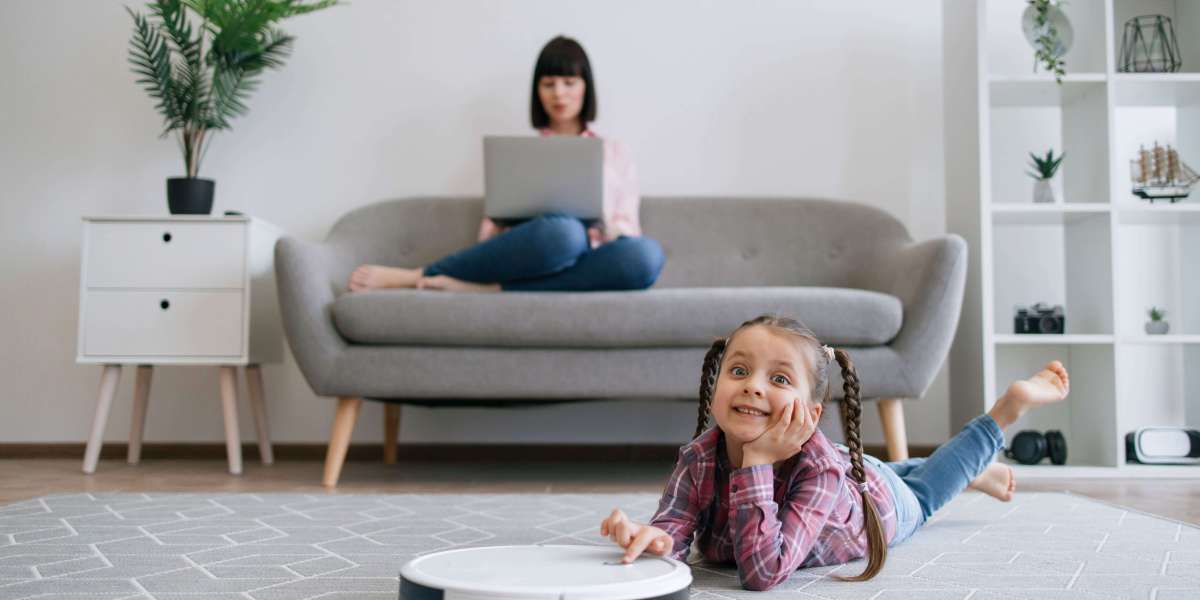A robot cleaner will help you keep your home tidy. But which ones can you trust to do the job effectively?
Certain models have maps that can keep track of your floor plans. This makes them more efficient than robots that do not have ability to map. Other features include carpet detection, which helps avoid wetting mopping pads.
1. AI-powered obstacle avoidance
An AI-powered cleaning robot is able to automatically detect obstacles and adjust its movement to avoid them. It makes use of cameras and sensors to detect objects. Advanced algorithms are used to determine the best route for its movement. It also can alter its behavior to the environment as it progresses.
Cleaning robots have become a popular consumer robotics product. They can be used for a variety of tasks like mopping, vacuuming or cleaning windows. Certain models can serve as personal assistants that can schedule tasks and control smart devices within the home, and provide weather information. However, they are susceptible to obstacles that can prevent them from functioning properly. These issues can be caused by debris or dust that is trapped in the nozzle or by objects that get entangled in the brush. Fortunately, many robot cleaners are now equipped with AI-powered obstacle avoidance technology to eliminate these issues.
The most popular types of obstacle avoidance technology in robots include ultrasonic camera, and light sensors. Ultrasonic sensors emit high-frequency sound waves which can detect obstacles and other objects in a room. They can also be used to detect changes in height such as the risers or the edges of carpets. This sensor is utilized by some DEEBOT robots to increase suction when climbing stairs or other difficult areas.
Other robots employ a more sophisticated form of obstacle avoidance technology known as simultaneous localization and mapping (SLAM). These robots utilize laser distance sensors to make a real-time map of their surroundings. They can also recognize obstacles by their size and shape. Robot vacuums employ the SLAM technology to navigate through furniture large obstacles, as well as other objects.
AI-powered robots that clean make decisions based on data from sensors. They can also take actions. This process, also known as machine learning, involves the use of computer algorithms to predict and learn from data. This information can be used to improve robot performance and efficiency. Once an AI-powered robot has spotted an obstacle, it will send signals of control to its actuators, like motors and servos, to navigate around the object.
2. Self-emptying dust bin
If you're an active person, self-emptying robot vacuums are your ideal dream that will come real. These models automatically empty their bins onto the docking station, eliminating the necessity to empty them manually onboard between cleaning sessions. It's a huge time saver and an excellent feature for anyone with allergies to household items. It also prevents dust from escaping into the air during emptying so you don't need to be concerned about it triggering your symptoms.
You'll need to regularly check your robotic vacuum's base for clogs and to clean the filters (if necessary). You can do this by lifting the lid of the dustbin then emptying it and then sifting through the contents to find any obstructions. Some robots come with an "empty bin" indicator on the screen that will flash to let you know when it's time to get the replacement of the bag.
Some models come with a larger storage container on their bases, which can store months or weeks of trash and you'll need to empty them on a much lesser frequency. This is especially useful for those who live in large home or have a hard-to-access space.
They are designed to ensure that dirt and pet hair can be contained without it being released into the air. This means you will not experience the blowback of dust when emptying a traditional vacuum. Depending on the model you choose, you'll have to empty the bin every 45 to 60 days.
In addition to being a handy feature The storage bins that are included in these robot cleaners can help to extend the life of the motor and brushes of the vacuum. This is because they're usually made from plastic that's made to last and is resistant to damage. They are typically available in shades of black or dark gray which can help cover up stains and smudges on your carpet, furniture, and other surfaces. These models also save you money in the long run, as they will reduce the frequency at which you'll require replacing your sweeper or vacuum cleaner.
3. Room-specific cleaning
Using a combination of sensors, mapping capabilities, and sophisticated algorithms, robot cleaners can learn the layout and arrangement of your home. By creating an outline of the space, robots can move furniture and other items more efficiently and precisely. This is particularly beneficial in multi-floored homes. Some robots have wall sensors that allow them to clean and navigate through new rooms.
Modern mopbots and robotic vacuums have mapping capabilities, but each manufacturer has its own unique way of using this feature. In general, mapping technologies such as LiDAR and vSLAM assist the robot navigate through your home, dividing each room into segments that can be efficiently cleaned in straight lines.
These technologies can also identify certain areas of your home that require special focus, such as under chairs and tables, where dirt tends to build up. Additionally, some robot vacuums and mopbots come equipped with acoustic impact sensors that let them know that they've hit something, such as the chair's leg or any other object with enough force to damage it.
With this information, the robot can alter its behavior and begin cleaning the area prior to moving to the next. It also can create new cleaning maps with every run, and enhance its path every time. The result is increased efficiency and a better, more thorough cleaning of each room, as well as a thorough cleaning report that is available in the app.
The roborock is a great example of a top 5 robot vacuum (https://www.robotvacuummops.com/)-quality robot with superior mapping capabilities and a simple app, and a small docking station. Its lidar navigation was swift and precise, correctly dividing rooms on my first try. The suction on carpets was impressive. It also comes with a feature that allows you to set up a cleaning mode with just one tap in the app, which makes it perfect for spot-cleaning.
The app is constantly updated to improve its performance. All data transfer between the robots and your smartphone are carried out via a secure, encrypted network. Based on the size and amount of floors in your home, you can opt to create multiple maps and assign each one to a particular schedule. Alternately, you can use the app to set your robot to automatically clean every floor of your home at the same time.
4. Scheduled cleaning
Many robot cleaners can be set to mop and vacuum multiple times a week, cleaning dust hair, pet hair and food crumbs from floors. The owners say that their homes are much cleaner and smell fresher. This high frequency could wear out sensors brushes and batteries faster. Follow the manufacturer's guidelines for charging and emptying your robot in order to prolong its life. Keep a bin of compressed air ready to blow dust away from sensors, gears, and the tiniest nooks of the base. Replace filters, side brushes and brush rolls as recommended.
If you have one robot or a number of models each can be programmed using the smartphone app or by voice control with Alexa or Google Assistant. This can also allow you to track the cleaning progress in real-time.
If you've mapped and zoned your floor space, you can choose which rooms will be included in the scheduled clean, and customize numerous settings to meet your requirements including mop intensity and water flow rate to vacuum power mode. You can also set up "no-go" zones to stop the machine from traveling through certain areas like hallways.
Most intelligent robots can be programmed to clean according with specific health and safety guidelines. For example, it is recommended to schedule surfaces that are regularly used to be cleaned in the event of an outbreak of disease, as well as to clean them immediately following contact with blood or other substances that could be harmful.
Like all electrical devices, it's important to ensure that your robot is wired in and on a flat surface to prevent falls. The location of your robot will affect the way it navigates around the room and how smoothly it moves. Ideally, the unit should be set about 2 feet from objects on either side, and four feet away from furniture (including tables and chairs) and stairs. This will enable the robot find an easy path free of obstacles and provide more accurate cleaning.









